Article
Adding Dry Needling to Your Chiropractic Practice
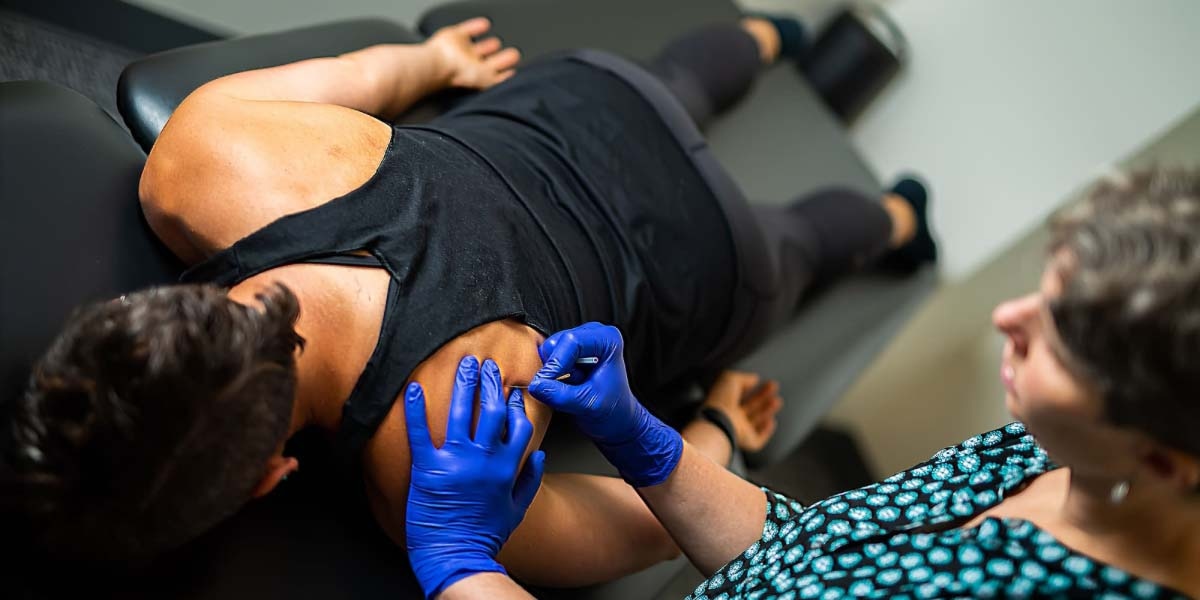
Subscribe to our newsletter
Subscribe to our newsletter to recive the latest blog posts to your inbox every week.
In a recent ChiroTouch webinar, ‘Adding Dry Needling to Your Chiropractic Practice,‘ Dr. Aaron Weigand shared his journey from skeptic to advocate, revealing how this evidence-based technique can expand your treatment capabilities, improve patient outcomes, and differentiate your practice from the competition.
Key Takeaways
- Dry needling is an evidence-based, anatomical technique, not acupuncture.
- It offers promising results for neuromuscular conditions and chronic pain, with a growing body of research supporting its use for certain musculoskeletal pain conditions.
- Chiropractors with their anatomical training, are well-positioned to incorporate dry needling safely and effectively, provided they receive appropriate education and adhere to state laws, which vary.
- Integration into the chiropractic workflow is simple and efficient with the right tools.
As a second-generation chiropractor leading a multidisciplinary pain management clinic, Dr. Aaron Weigand’s introduction to dry needling came through a personal experience that changed his clinical perspective.
After suffering an L4 disc extrusion, he sought care from a physical therapist who used dry needling as part of his treatment.
The result was immediate relief and a fast return to work.
That one appointment shifted his perspective by sparking a question: Why wasn’t this simple and effective technique part of his chiropractic training?
Motivated by both curiosity and the desire to offer his patients more, Dr. Weigand spent the next four years immersed in learning dry needling.
Today, dry needling has become a core part of his approach to treating complex pain, a way to reach stubborn conditions that don't always respond to traditional methods.
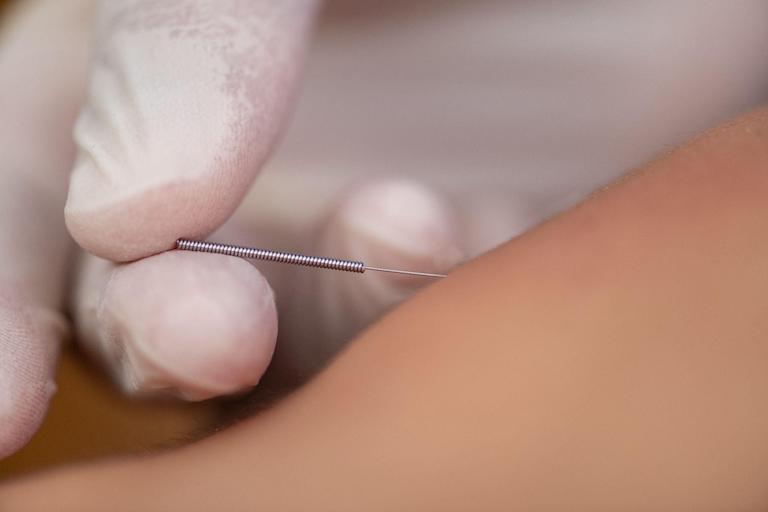
Dry Needling vs. Acupuncture
For many patients—and even some providers—the line between dry needling and acupuncture isn’t always clear. Both use the same type of thin filiform needle, but their frameworks and goals are different.
- Traditional acupuncture. This method is grounded in ancient philosophies and energy-based systems, such as meridians, chi, and the five elements. The aim is to restore energetic balance rather than address specific anatomical dysfunctions.
- Western medical acupuncture. This approach is a more modern evolution. It focuses on modulating the autonomic nervous system through needle stimulation but still adheres to the acupoint model.
- Deep acupuncture. In some cases, acupuncturists apply needles at deeper levels in an effort to influence musculoskeletal issues. While similar in depth to dry needling, the theoretical framework is still rooted in energy flow.
- Dry needling. This technique comes directly from the trigger point research of Travell and Simons, whose work demonstrated that inserting a needle alone—without any medication—could deactivate trigger points and relieve pain. The approach is anatomical, functional, and supported by modern neuroscience.
There’s significant overlap between commonly needled trigger points and acupuncture points. But that doesn’t mean dry needling validates acupuncture theory—it simply suggests different systems may be describing the same pain patterns using different language.

Growing Scientific Support
Dry needling has only recently gained visibility in chiropractic. While the evidence base is still developing and more high-quality studies are needed for many indications, dry needling studies are catching up fast, and it’s encouraging.
Here’s what stands out.
- Minimally invasive, easy to learn. With proper training, chiropractors can adopt the technique safely and confidently.
- Training matters. Most injuries related to dry needling are associated with poor anatomical knowledge, but complications can also arise from other factors, like patient anatomical variations or procedural errors. The takeaway: This isn’t a “quick certification‘ tool, it requires real education.
- The needle works. Several studies show that dry needling is effective for certain musculoskeletal pain conditions.
Clinical comparisons are especially compelling. For conditions like greater trochanteric pain syndrome, some studies suggest that dry needling performs just as well as cortisone injections at long-term follow-up, with less discomfort, risk, and cost.
In other studies, results have matched or exceeded results from Botox, PRP, and other high-cost interventions. Deeper needle placement consistently produces better results than superficial needling, likely due to greater stimulation of muscle spindles and mechanoreceptors.
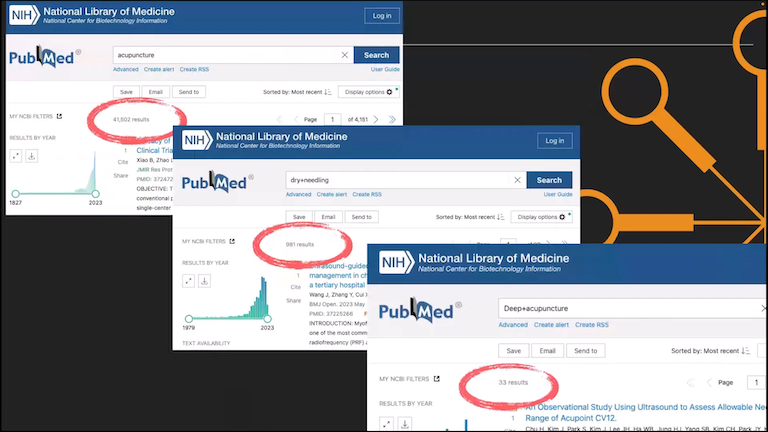
Mechanisms of Action
Dry needling is so effective because it’s not a local treatment; it is thought to activate several pain-relief systems simultaneously.
Here’s how it works:
- Pain gating at the spinal level. Deep needling stimulates mechanoreceptors that activate inhibitory interneurons in the spinal cord. These neurons release enkephalins, blocking pain signals before they reach the brain.
- Improved local circulation. Needling promotes vasodilation, flushing inflammatory chemicals, and potentially triggering angiogenesis, which helps damaged tissues heal.
- Central nervous system activation. With sufficient stimulation, dry needling engages brain regions responsible for descending pain control to provide widespread relief.
- Autonomic nervous system balance. Studies show that needling can influence sympathetic and parasympathetic tone. One example: Needling a single gluteus medius trigger point can produce circulation changes throughout the lower extremity.
In short, dry needling isn’t just about deactivating tight muscles. It engages both local tissues and systemic pathways, making it a versatile and powerful tool.
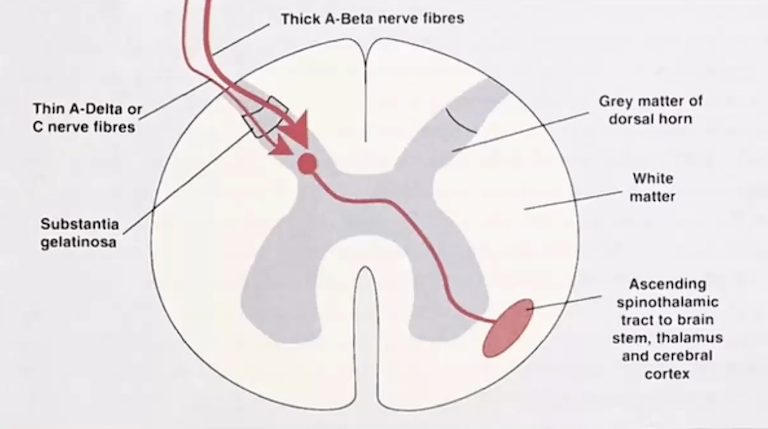
Clinical Use Cases
Dr. Weigand uses dry needling to treat a wide range of neuromusculoskeletal conditions—some common, others more complex. These examples highlight how dry needling can be applied across different body systems and patient needs.
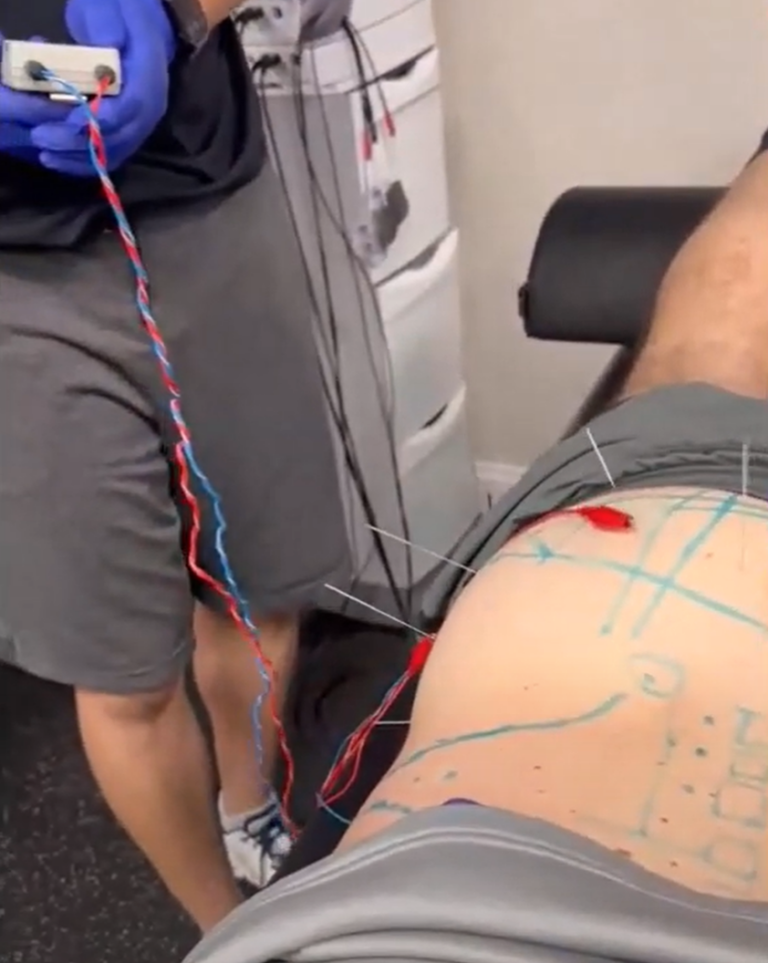
- Piriformis syndrome. Precise placement and depth checks improve outcomes in this often-stubborn diagnosis.
- Bell’s palsy. Targeted needling of facial muscles has led to dramatic improvements in function and mobility.
- Chondromalacia patella. Treating stabilizing hip muscles like the gluteus medius and quadratus lumborum—rather than focusing only on the knee—delivers better long-term results.
- Post-surgical cases. For patients unable to tolerate manual therapy, dry needling helps stimulate deep tissues and promote recovery.
- Contusions and bruising. When paired with kinesiology taping or cupping, dry needling can reduce inflammation and accelerate healing.
- Lumbar disc issues. Deep needling of the lamina and multifidi improves circulation in hard-to-reach tissues, often reducing pain and improving mobility.
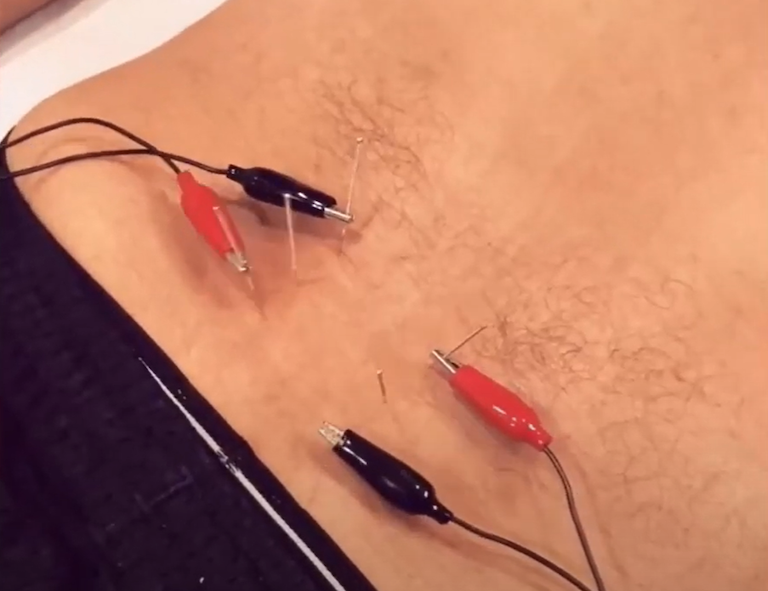
Dr. Weigand typically follows a simple and effective care sequence: Needle the muscle, adjust the joint, and reinforce with movement. This approach addresses both soft tissue and joint dysfunction while supporting longer-lasting results.
Who Is Qualified to Perform Dry Needling?
Safety is always the top concern, and the research is clear: Injuries from dry needling are rare, particularly when performed by practitioners with extensive understanding of anatomy.
That’s where chiropractors have an advantage.
- Extensive anatomical training. With about eight years of focused education, chiropractors are well prepared to understand and respect the body's structural relationships.
- Hands-on experience. Years of palpation and manual therapy make chiropractors especially skilled at identifying the right tissues to treat.
- Functional movement analysis. This allows chiropractors to go beyond symptoms and treat the true source of dysfunction.
State laws vary, so check your state’s requirements before integrating dry needling. Regulations are evolving quickly, so staying informed is key to practicing both safely and legally.

Return on Investment and Practice Impact
Dry needling isn’t just a clinically valuable technique,it also makes financial sense for chiropractors looking to expand their services without complicating their workflow.
With minimal upfront cost and strong patient demand, it offers a practical path to both better outcomes and practice growth.
Here’s why.
- Low startup cost. Most state-approved training programs can be completed over a weekend and cost between $1,200 and $2,000. Supplies are inexpensive, with needles costing as little as 10 to 25 cents each.
- High perceived value. Patients—especially those managing chronic or unresolved pain—often view dry needling as a premium service. Practices typically charge $50 to $100 per session, even in cash-based settings.
- Reimbursement potential. While not always covered under commercial plans, dry needling is often reimbursed in personal injury and workers' comp cases using CPT codes 20560 or 20561. Electrical stimulation, if used, can be billed separately.
- Time-efficient delivery. A typical dry needling session takes just a few minutes and fits seamlessly into an existing appointment. This allows chiropractors to increase visit value without extending visit time.
- Better outcomes, stronger retention. Patients who feel relief quickly are more likely to follow through on care plans, refer others, and return for future services—all of which support steady, long-term growth.
Dry needling offers chiropractors a simple, evidence-based way to enhance their care and elevate their practice. With low overhead and strong clinical impact, it’s an investment that pays off for both patients and providers.
Efficient Documentation With ChiroTouch
Adding dry needling shouldn’t make your charting harder. Chiropractors already juggle patient care, compliance, and practice management, so documentation needs to work with you, not against you.
That’s where ChiroTouch shines.
Dr. Weigand’s Custom Dry Needling Macros
To make integration easy, Dr. Weigand has created a set of dry needling macros for ChiroTouch Cloud. These are available to anyone who registers for the free on-demand webinar.
Here’s what they include:
- Complete treatment documentation. The macros capture needle gauge, prep steps, informed consent, muscle groups treated, retention time, patient tolerance, and observed effects.
- Download and import. After watching the webinar, users receive a direct download link and instructions to import the macros into their system.
- Customizable format. Once imported, the macros can be edited to match your unique language, workflows, or documentation preferences.
These macros take the guesswork out of dry needling documentation—so you can focus on care, not keystrokes.
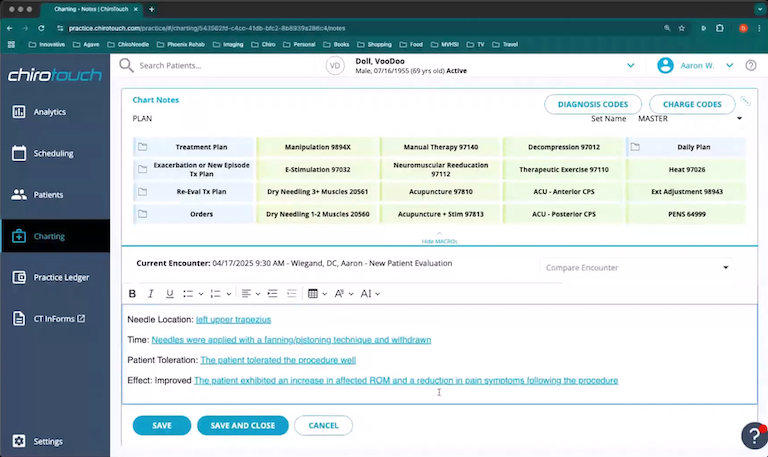
These macros offer a jump-start for chiropractors looking to incorporate dry needling efficiently, removing the guesswork from initial setup and documentation design.
ChiroTouch Supports Fact, Accurate Charting
Beyond macros, ChiroTouch provides a robust set of features that support fast, compliant documentation across all treatment types, including dry needling.
- Cloud-based accessibility. The platform eliminates server requirements while providing automatic backups and practice-wide accessibility from any device.
- Building block approach. The Provider All-in-One screen enables practitioners to construct detailed notes using pre-written segments that can be customized for each patient.
- SALT functionality. The Same As Last Time feature allows practitioners to replicate previous visit notes and update only changed elements using clickable hyperlinks.
These tools transform what could be tedious documentation into a rapid, standardized process that maintains quality while dramatically reducing charting time.
“If you’re adding dry needling, you need to document it properly. With ChiroTouch, I can do that in a couple of clicks—it’s that efficient.‘
Watch the Webinar to Learn More
The on-demand webinar offers a deeper dive into both clinical and practical aspects of dry needling, plus hands-on insights that go beyond what we could cover here. If you’re considering adding this technique to your toolbox, it’s worth the watch.
Here’s what else you’ll learn:
- Scientific evidence overview. Further details about key studies and clinical data that support dry needling's effectiveness for musculoskeletal pain, headaches, and more.
- Live case examples. See real patient demonstrations, including needle placement for piriformis syndrome, facial palsy, contusions, and post-surgical scenarios.
- Technique variations and safety tips. Learn how to perform depth checks, avoid critical structures, and adjust your technique based on anatomical region.
- Needle selection and dosage strategies. Explore how needle gauge, stimulation methods, and treatment duration influence results.
- Deeper dive into mechanisms. Get a more nuanced explanation of the pain gate theory, local circulation effects, and systemic nervous system modulation.
- Training recommendations. Hear Dr. Weigand’s advice on where and how to get certified, plus why chiropractors are uniquely suited to excel in dry needling.
- Clinical workflow integration. Learn how to structure a fast, effective visit that includes needling, adjusting, and exercise, all in one streamlined appointment.
- Billing and coding guidance. Understand how to properly use CPT codes 20560 and 20561, when to bill electrical stimulation separately, and what documentation payers expect—especially for personal injury and workers’ comp cases.
- State-by-state regulatory insight. Understand how laws differ across states and what to check before you start.
Watch the webinar to get all the details—and download Dr. Weigand’s custom macros to make implementation even easier.
Considering Adding Dry Needling to Your Practice?
ChiroTouch’s integrated EHR system makes it easier to incorporate new services like dry needling while maintaining efficiency and compliance. From SOAP notes to billing to patient communication, ChiroTouch helps you streamline your workflow—so you can focus on results.
Schedule a demo today to see how ChiroTouch supports modern chiropractic care.

FAQs

Trusted chiropractic experts rooted in innovation and growth, driven by unmatched chiropractic software expertise.
Designed for chiropractic practices
ChiroTouch was intentionally designed specifically for cash and insurance billing practices like yours.




